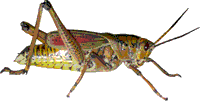Entomology Collections, Miscellaneous
Date of this Version
2013
Citation
International Journal of Odonatology, 2013 Vol. 16, No. 4, 327–350
doi 10.1080/13887890.2013.868328
Abstract
Assessment of conservation status is a necessary step before management plans can be formulated. Historically such assessments have a strong bias toward vertebrates, particularly endothermic terrestrial vertebrates (i.e. birds and mammals). Invertebrates, by contrast, tend to be ignored, and many insect groups, despite being species rich and reasonably well studied, such as the Odonata (damselflies and dragonflies), have not been assessed or have been assessed only at a broad geographic level (e.g. internationally or continentally). Assessment at a state level recognizes that states often are at the front of regional and local conservation and management planning and implementation. On the basis of our extensive surveys across the Great Plains state of Oklahoma in the central USA, as well as our compilation of thousands of museum specimens dating back to 1877, we were able to discern the status and distribution of each of the 161 species of odonates recorded in the state. In doing so we were able to assess a conservation rank, using NatureServe criteria, for each species.We conclude that nine species are critically imperiled (S1) in the state. These species require immediate conservation attention, initially at the level of intensive surveys to delineate the full extent of the geographic range in the state and to determine the population size and habitat needs. We categorized an additional 13 species as imperiled (S2) and placed 18 species on a “watch list” (S3). Species on these two lists will require field surveys as well, and regions of high occurrence of listed species ought to be targeted for such efforts and considered as set-asides for preservation of key members of the odonate fauna in the state.


Comments
© 2013 The Author(s). Published by Taylor & Francis. This is an Open Access article. Non-commercial re-use, distribution, and reproduction in any medium, provided the original work is properly attributed, cited, and is not altered, transformed, or built upon in any way, is permitted